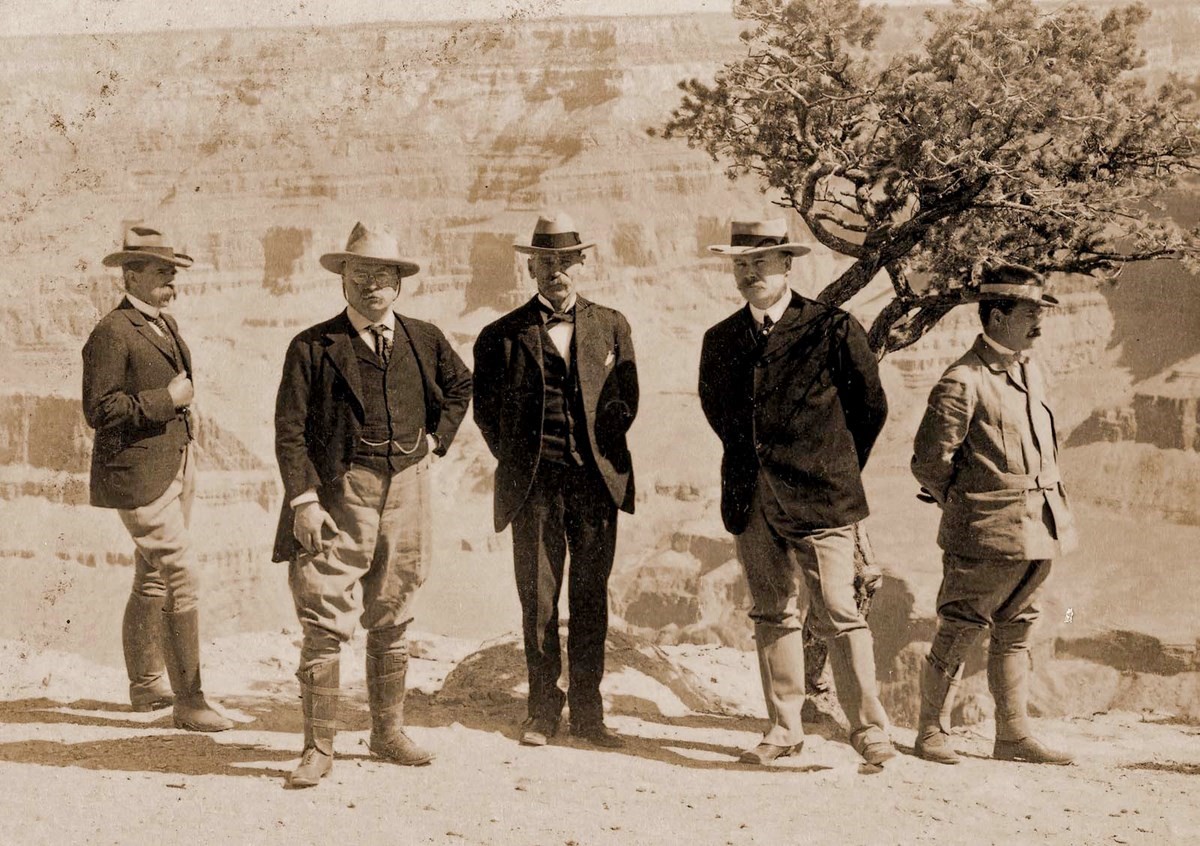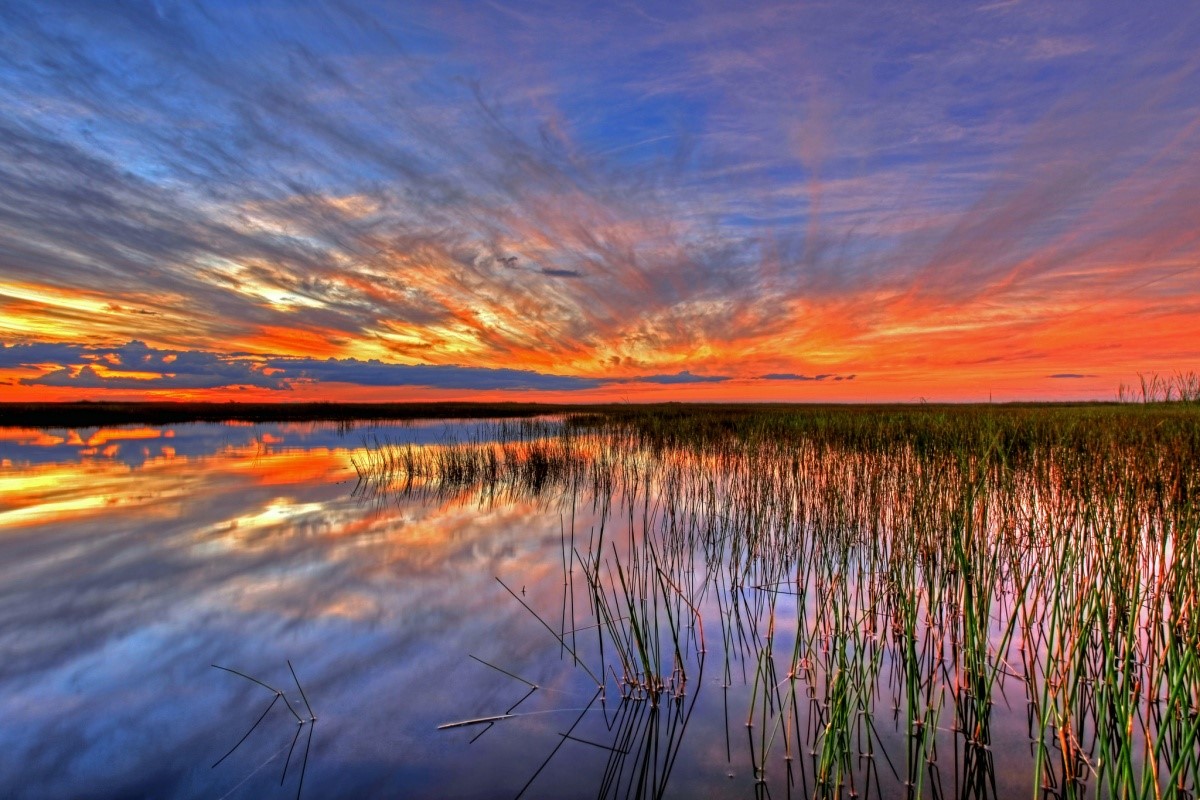Published: April 13, 2022
Did you know there are more than 400 national park sites in the United States? These include parks, battlefields, monuments, seashores, historic sites and recreation areas. Each April we observe National Park Week, described by the National Park Service (NPS) as “a time to explore amazing places, discover stories of history and culture, help out, and find your park!” This year’s celebration will be observed April 16 - 24, although NPS recommends checking with individual parks for the latest safety information and guidance, including social distancing and wearing masks. You can also take a virtual tour of a National Park or read on for legislation that established or protected some of our nation’s treasures.
On March 1, 1872, President Ulysses S. Grant signed the Yellowstone National Park Protection Act into law creating the very first national park in the United States.
President Theodore Roosevelt was very influential in making conservation in the United States a priority.  While President from 1901 – 1909, Roosevelt created the United States Forest Service and established 150 national forests, 51 bird reserves, 4 national game preserves, 5 national parks, and 18 national monuments. During his presidency, Theodore Roosevelt also protected approximately 230 million acres of public land. (Source: National Park Service )
While President from 1901 – 1909, Roosevelt created the United States Forest Service and established 150 national forests, 51 bird reserves, 4 national game preserves, 5 national parks, and 18 national monuments. During his presidency, Theodore Roosevelt also protected approximately 230 million acres of public land. (Source: National Park Service )
The Antiquities Act signed by President Roosevelt on June 8, 1906, grew out of a movement to protect the prehistoric cliff dwellings, pueblo ruins and early missions in the Southwest. It authorized Presidents to proclaim and reserve "historic landmarks, historic and prehistoric structures, and other objects of historic or scientific interest" on lands owned or controlled by the United States as "national monuments." This was the first law to establish that archeological sites on public lands are important public resources. (Source: National Park Service )
On August 25, 1916, President Woodrow Wilson signed the National Park Service Organic Act* creating the National Park Service. The act stated that the National Park Service had a duty “to conserve the scenery and the natural and historic objects and the wild life…; and to provide for the enjoyment of the same in such manner and by such means as will leave them unimpaired for the enjoyment of future generations.”
On February 26, 1919, Congress passed the act that established Grand Canyon National Park in Arizona.
One of the most significant reorganizations in the evolution of the National Park System was in August, 1933. President Franklin Roosevelt signed two executive orders. They transferred the War Department's parks and monuments to the National Park Service, and the National Park Service also received all the national monuments held by the Forest Service.
Everglades National Park in Florida was established in 1947. In his address on conservation at the dedication of Everglades National Park, President Harry Truman said, “Here is land, tranquil in its quiet beauty, serving not as a source of water, but as the last receiver of it.”  Read his full remarks on p.545, Public Papers of the Presidents Collection, Book 01, Presidential Documents - January 1 to December 31, 1947.
Read his full remarks on p.545, Public Papers of the Presidents Collection, Book 01, Presidential Documents - January 1 to December 31, 1947.
The Wilderness Act of 1964* established a National Wilderness Preservation System that protected "wilderness areas" for enjoyment of the American people.
Land and Water Conservation Fund Act of 1965 established a fund to acquire new recreation lands.
In 1966, a new federal agency, the Advisory Council on Historic Preservation was established as a result of the National Historic Preservation Act of 1966. All historical parks had to be entered in the National Register of Historic Places.
On October 2, 1968, President Johnson signed a bill establishing Redwood National Park in California, which is home to some of the nation’s largest trees. See his remarks on p. 310, Book 02, Presidential Documents - July 1, 1968 to January 20, 1969.
The Wild and Scenic Rivers Act of 1968* provided protection and preservation for selected rivers that provided outstanding scenic, recreational, historic, fish and wildlife or cultural values. Eight rivers were originally identified. This legislation added more management challenges for the National Park System.
The National Trails Act of 1968* established national recreation trails accessible to urban areas as well as national scenic trails. The first two national scenic trails were the Appalachian Trail and the Pacific Crest Trail.
The Archaeological Resources Protection Act of 1979* superseded the Antiquities Act. The new act defined federal archeological resources, protected archaeological sites and objects, and established penalties for destruction or theft.
More than 47 million more acres were added to the National Park System with the Alaska National Interest Lands Conservation Act of 1980 *.  Two years earlier, President Jimmy Carter greatly expanded the National Park Service's land management responsibilities by proclaiming national monuments totaling roughly 45 million acres in Alaska. This legislation dramatically increased the total designated wilderness acreage by doubling the size of the national park system.
Two years earlier, President Jimmy Carter greatly expanded the National Park Service's land management responsibilities by proclaiming national monuments totaling roughly 45 million acres in Alaska. This legislation dramatically increased the total designated wilderness acreage by doubling the size of the national park system.
Previous legislation made it illegal to dig up Indian graves and remove human and ceremonial remains, but in 1990, the Native American Graves Protection and Repatriation Act * directed museums to return Indian remains to the direct or cultural descendants for reburial.
In 1994, the California Desert Protection Act was passed to establish both Death Valley and Joshua Tree National Parks. The legislation states that these lands were “increasingly threatened by adverse pressures which would impair, dilute, and destroy their public and natural value.”
On July 22, 2020, Congress passed the Great American Outdoors Act*, and President Donald Trump signed the bill into law on August 4, 2020. Read his signing statement here. This legislation provided major funding for deferred maintenance projects and the backlog of needed repair work in the National Park Service system as well as benefit underserved communities.
Additional Article Sources and Related Resources
Search GovInfo for more documents related to U.S National Parks.
Browse documents in the U.S. Congressional Serial Set Collection, Browse by Topic - National Parks and Reserves.
Check out GPO’s Bookstore for publications produced by the National Park Service.
National Park System timeline, (NPS)
Criteria for New National Parks, (NPS)
What is a National Park? - Lesson Plans for Educators, (NPS)
Major Milestones in the National Park Service, (U.S. Department of Interior)
*This links to a Statute Compilation, which is a compilation of the public law, as amended, and is an unofficial document and should not be cited as legal evidence of the law. Learn more.